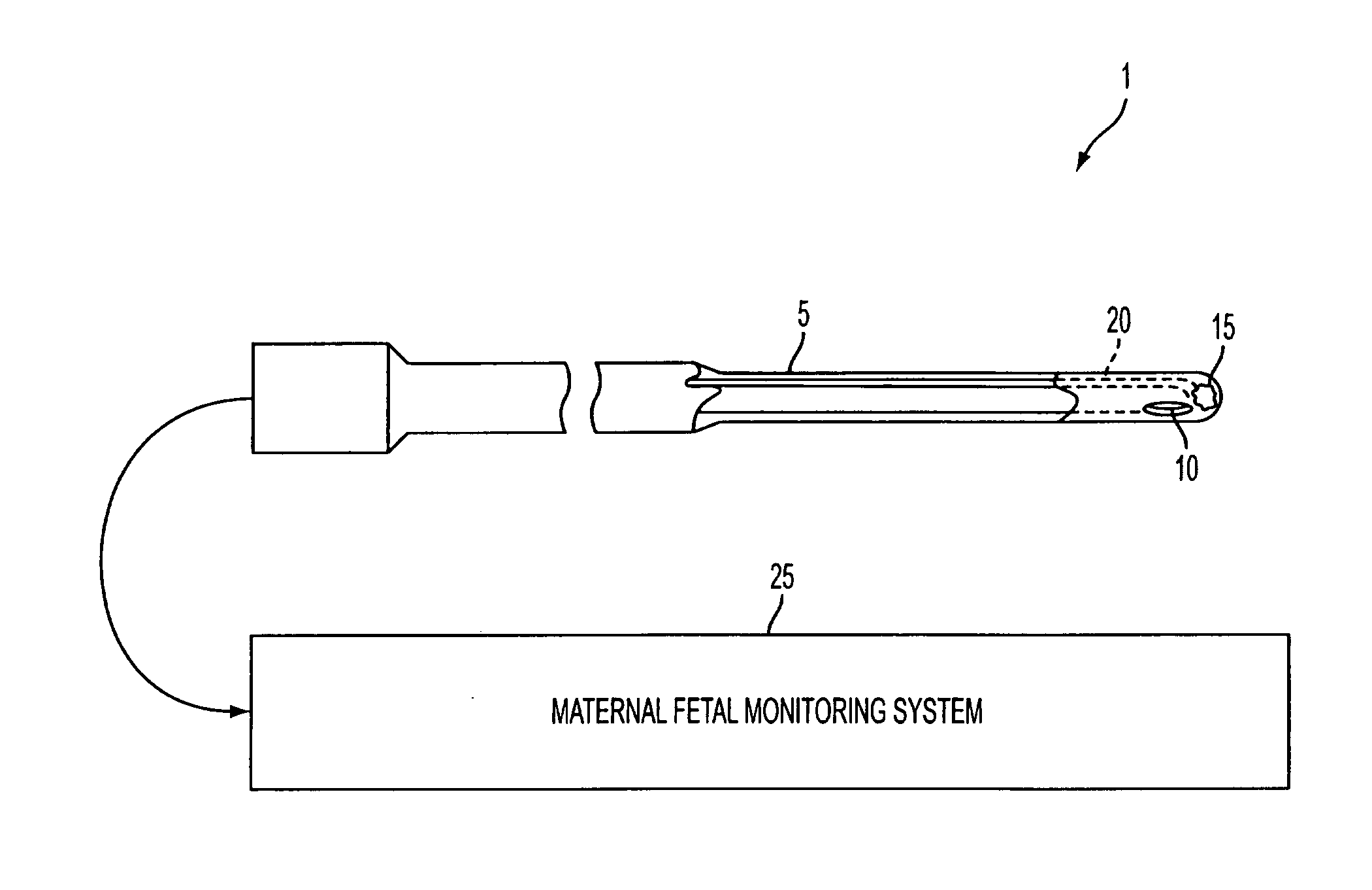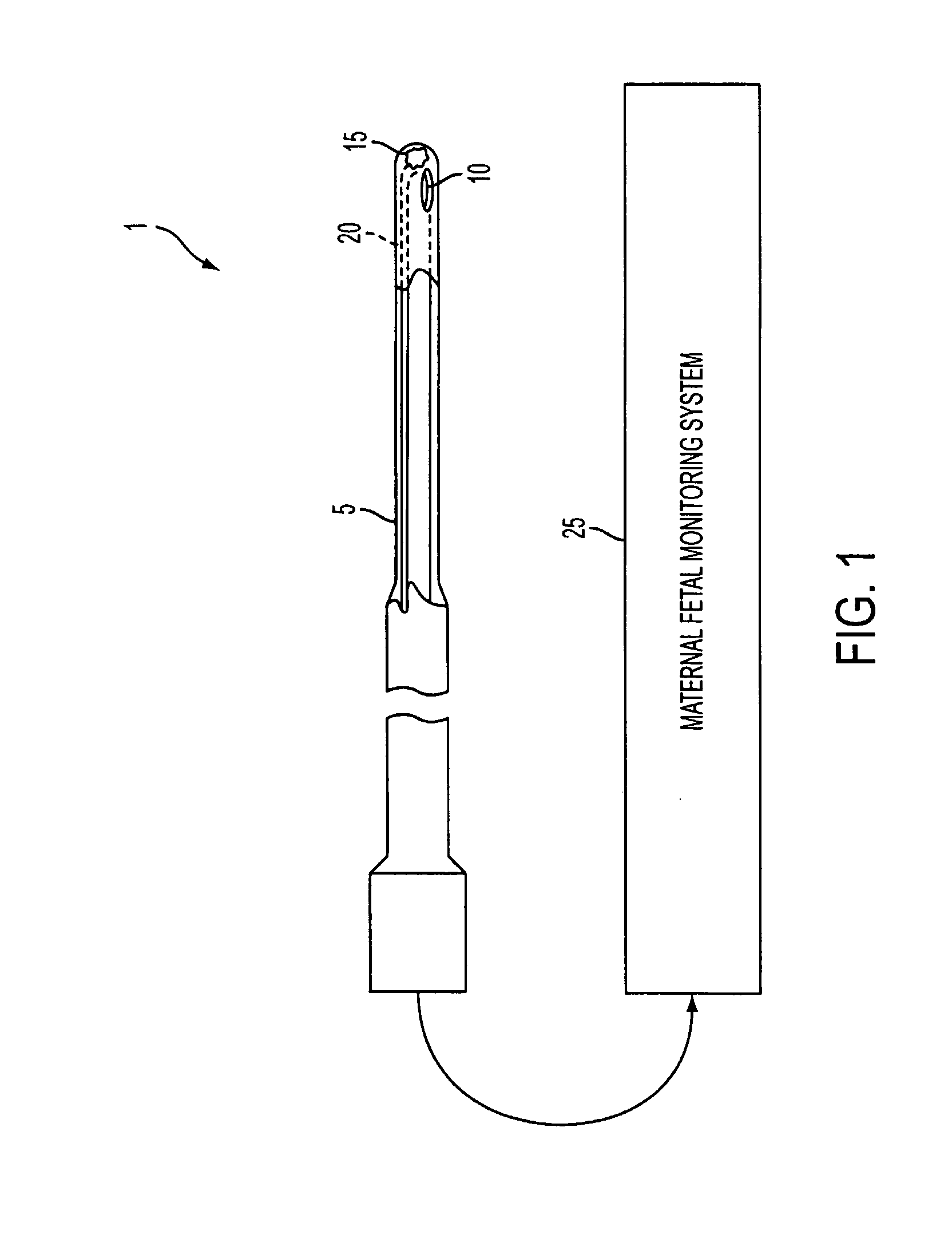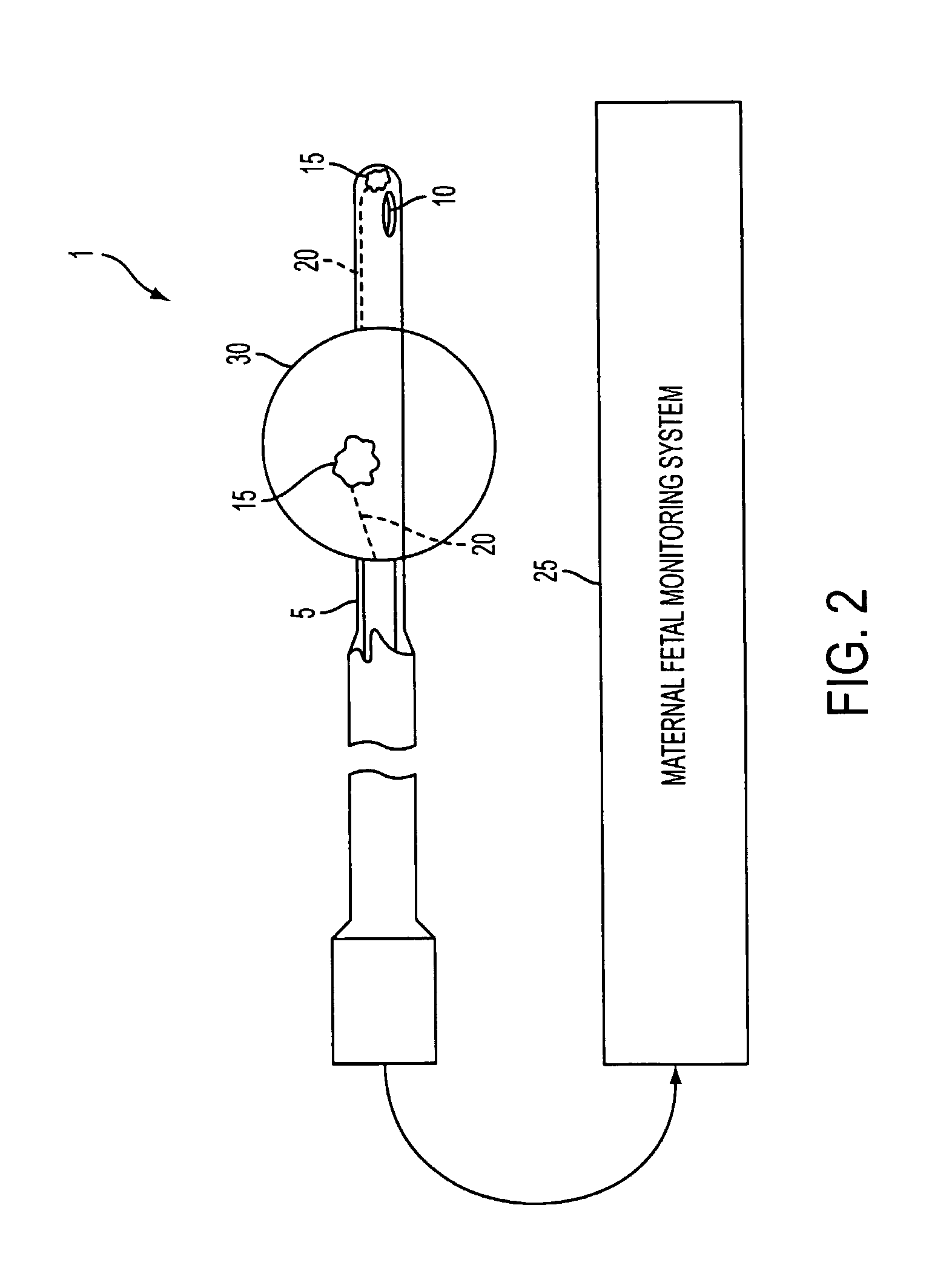Novel Catheter Sensor
a catheter sensor and sensor technology, applied in the field of new catheter sensors, can solve the problems of entail some risk, half having an undetermined cause of death, and a ruptured membran
- Summary
- Abstract
- Description
- Claims
- Application Information
AI Technical Summary
Benefits of technology
Problems solved by technology
Method used
Image
Examples
Embodiment Construction
[0021] One aspect of the subject invention is directed to devices useful for monitoring fetal vital signs while the device is inserted into the maternal bladder. Advantageously, the fetal monitoring device of the invention extracts vital signs, specifically FECG in real-time using electrophysical sensors. The sensor location is external to the uterus, and thus has no requirement for cervical dilation or membrane rupture. A further advantage lies in a reduced risk of danger to the fetus because the monitoring device of the subject invention and the fetus are not in direct contact. Furthermore, the device of the invention is useful antepartum and intrapartum because the device is designed for insertion into the maternal bladder.
[0022] The fetal monitoring device of the subject invention comprises a bladder insert, at least one electrophysical sensor, and a means to transmit extracted fetal vital signs from the sensor to a maternal fetal monitoring system external to the patient. In F...
PUM
 Login to View More
Login to View More Abstract
Description
Claims
Application Information
 Login to View More
Login to View More - R&D
- Intellectual Property
- Life Sciences
- Materials
- Tech Scout
- Unparalleled Data Quality
- Higher Quality Content
- 60% Fewer Hallucinations
Browse by: Latest US Patents, China's latest patents, Technical Efficacy Thesaurus, Application Domain, Technology Topic, Popular Technical Reports.
© 2025 PatSnap. All rights reserved.Legal|Privacy policy|Modern Slavery Act Transparency Statement|Sitemap|About US| Contact US: help@patsnap.com



